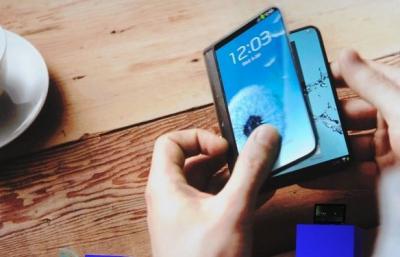Guangzhou New Vision shows a new 0.01 mm thick flexible OLED prototype
China's Guangzhou New Vision has been developing flexible AMOLED displays for a long time, and the company now unveiled its latest prototype. This 0.01-thick panel use a Polyimide substrate, an Oxide-TFT backplane and an RGB (direct emission) frontplane. The curvature radius is 4.5 mm.
New Vision's 2014 flexible AMOLED prototype actually used a PEN substrate - and it's interesting to see the coming moving back to Polyimide. Back in 2014 New Vision said that the flexible OLEDs will be commercialized "in the near future".









